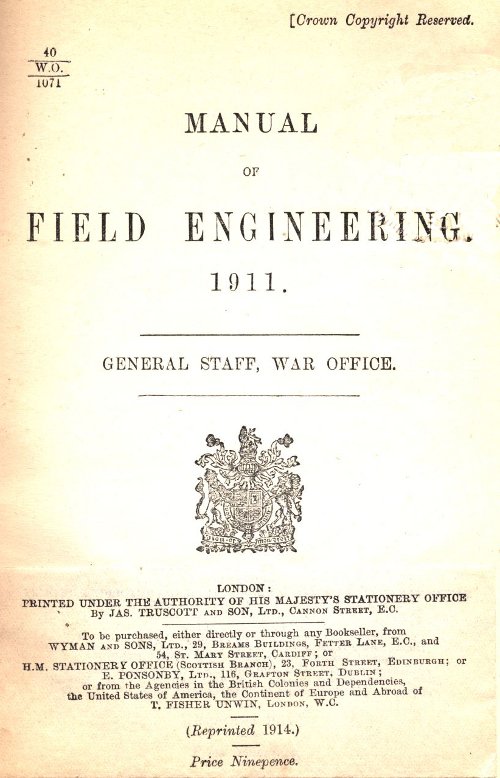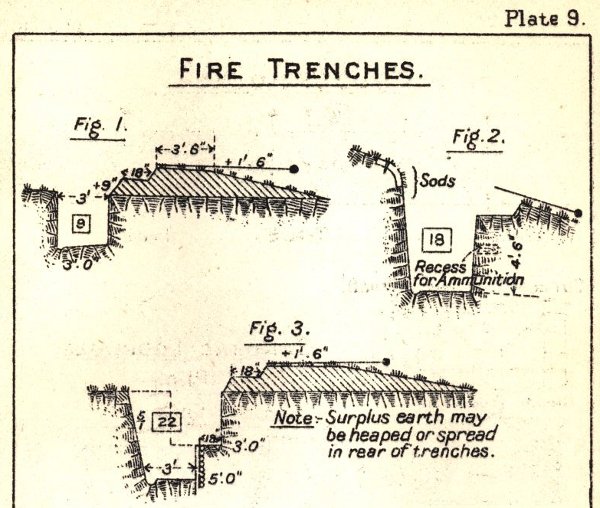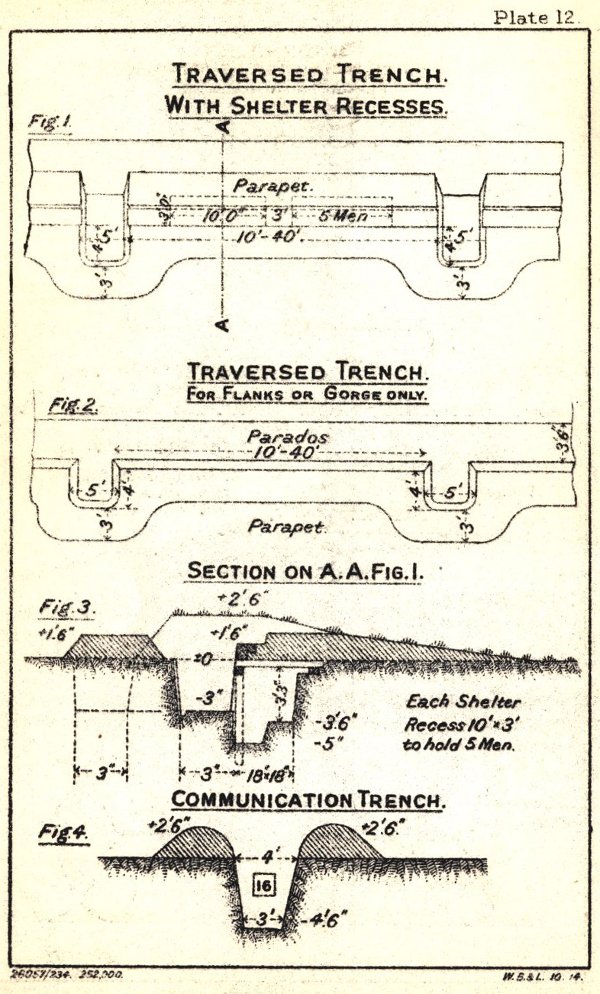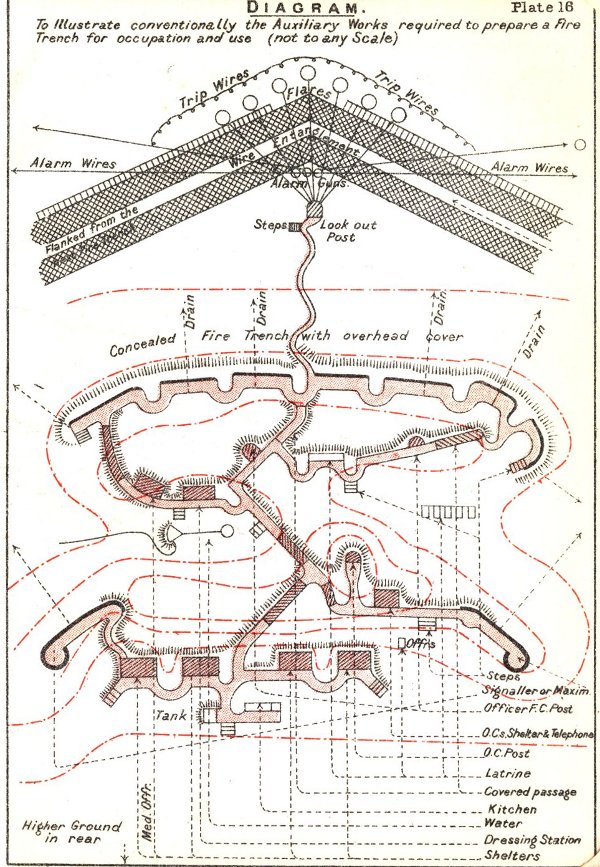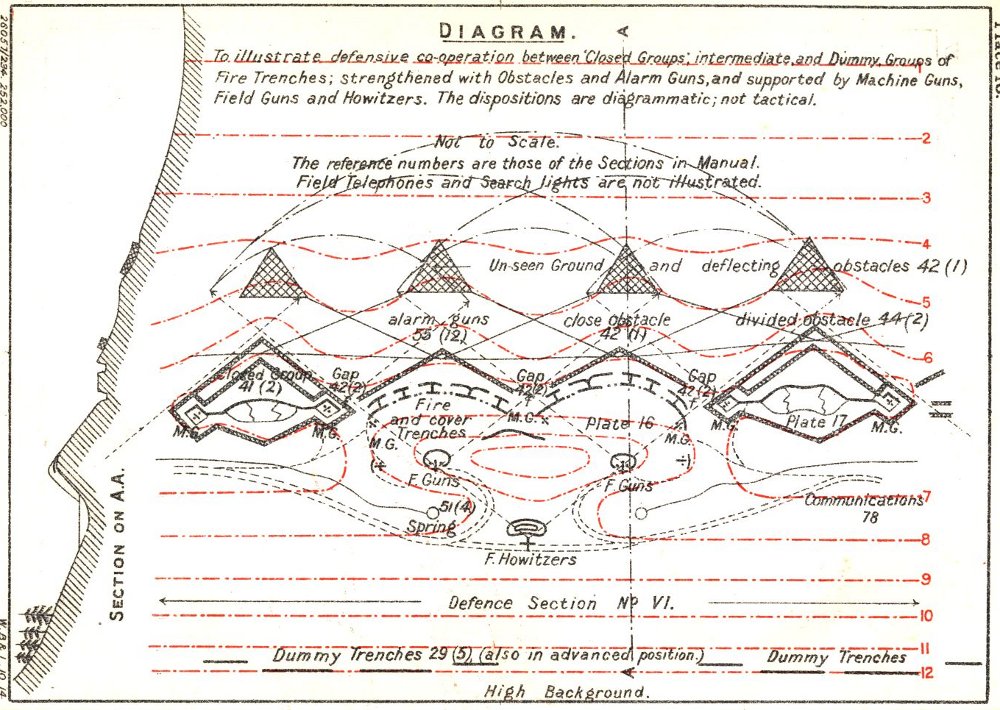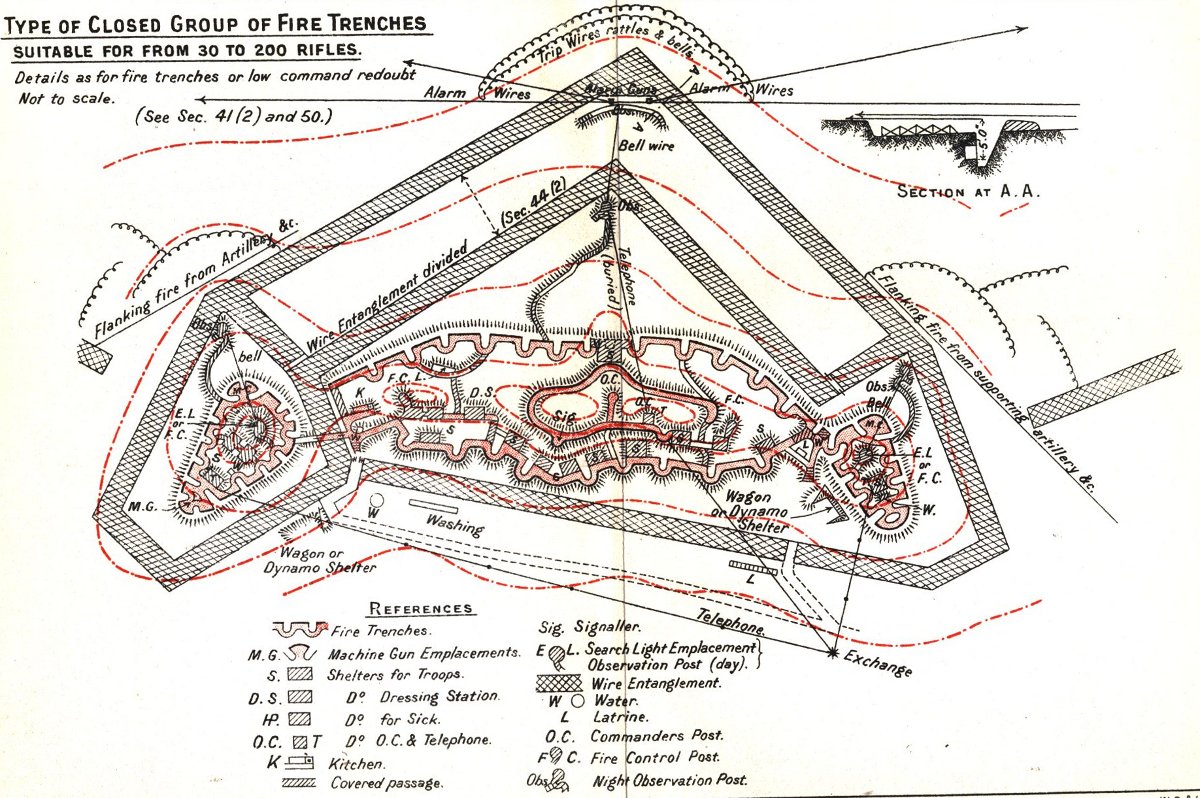Topic: CEF

Manual of Field Engineering (1911)
1. By Field Fortifications is implied all those measures which may be taken for the defence of positions intended to be only temporarily held. Works of this kind are executed either in face of the enemy or in immediate anticipation of his approach.
2. Field Fortification presupposes a defensive attitude, and, though recourse to it may under certain circumstances be desirable, it must always be regarded as a means to an end, and not an end in itself.
3. The principal aim of field fortification is to enable the soldier to use his weapons with the gates effect, the second to protect him against the adversary's fire. By thus reducing losses and increasing the power of resistance in any part of the theatre of operations or field of battle, more troops are available to swell the force destines for decisive action there of elsewhere.
Thus begins the 1911 Manual of Field Fortification. Many people perceive the beginning of trench warfare was during the First World War, where th occupation and fighting from extensive trench systems was a defining feature of the western front in France and Flanders. But the concepts of trenching and trench warfare were well developed before they were tested on such a massive scale between 1914 and 1918.
The manual shows, in its language and diagrams, its point of evolution from classic siege warfare entrenchments to the more expedient infantry entrenchments of the American Civil War and the Russo-Japanese War, both of which had British Army officers observing their actions, and the South African War. With Manuals such as this one, officers of the British army and the Canadian Expeditionary Force had a ready manual for the basics of field fortifications in hand as they took to the field of battle.
The following points should be borne in mind when examining a locality which it is desired to strengthen:…
(a) The strong and weak points of the position to be defended should be carefully studied, and the site for entrenchments chosen with due regard to tactical requirements and economy of men.
(b) The enemy in attacking should be exposed to the fire of the defenders, more especially for the last 300 to 400 yards. To ensure this, the foreground may require clearing.
(c) The enemy should be deceived as to the strength and dispositions of the defending troops, and the character of their works.
(d) The defenders should be screened from the enemy's view, and sheltered from his fire by natural or artificial cover, so arranged as to permit the maximum development of their own rifle fire.
(e) The free movement of the attacking troops should be hampered by obstacles to detain them under fire and to break their order of attack.
(f) The free movement of the defenders should be facilitated by improving communications within their position, and clearing the way for counter attack.
